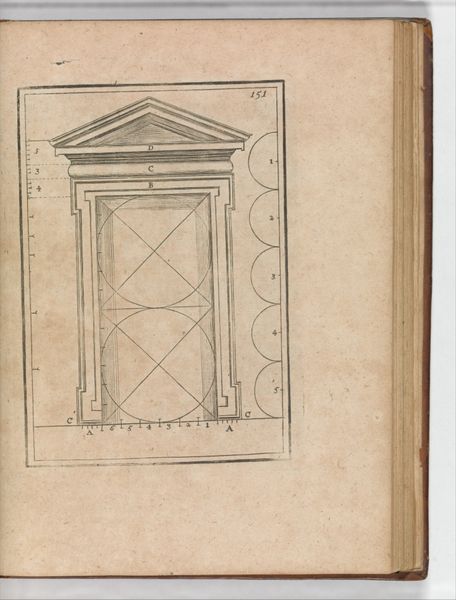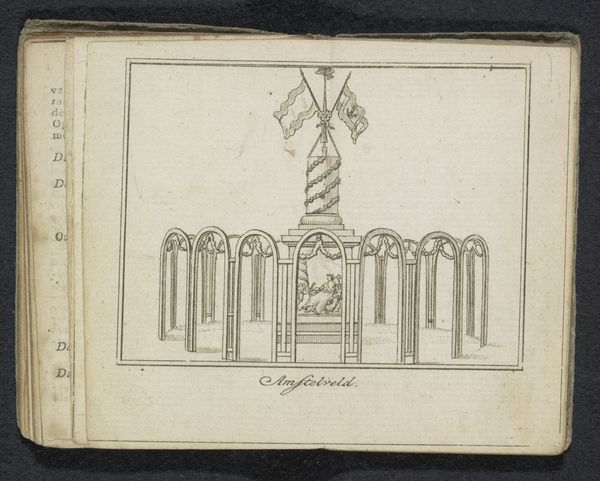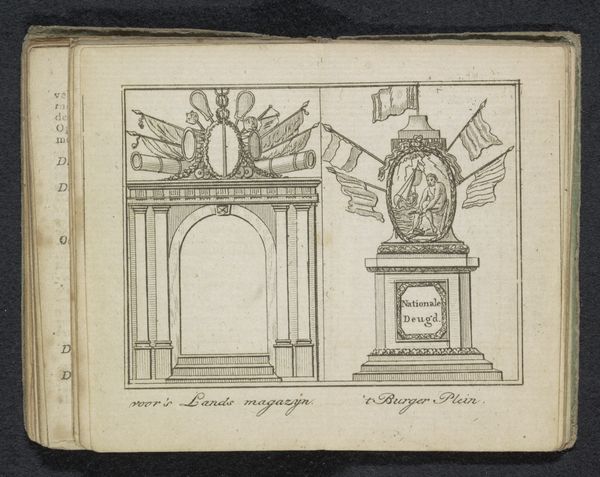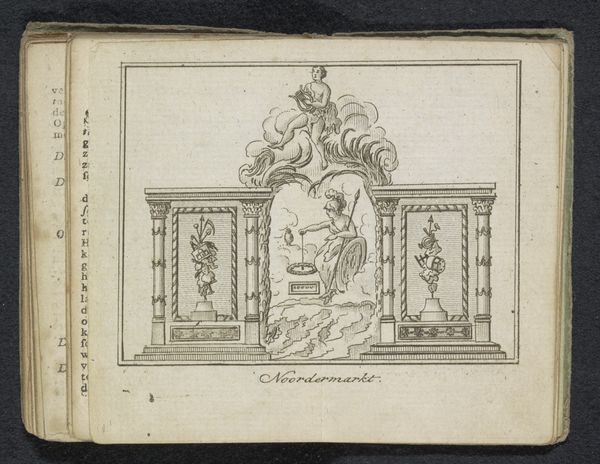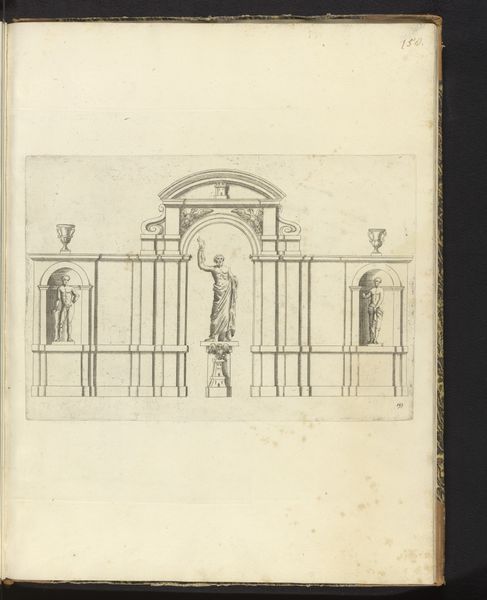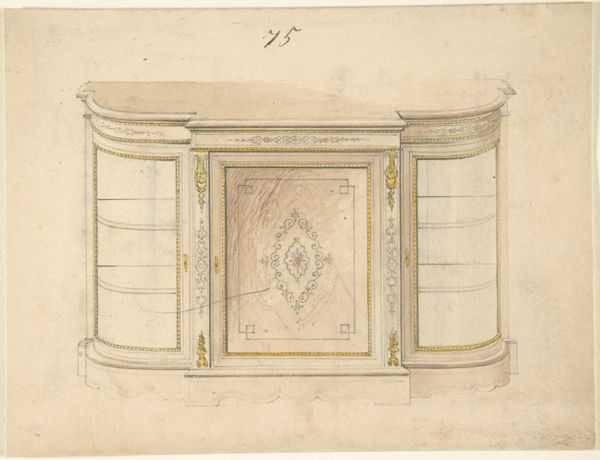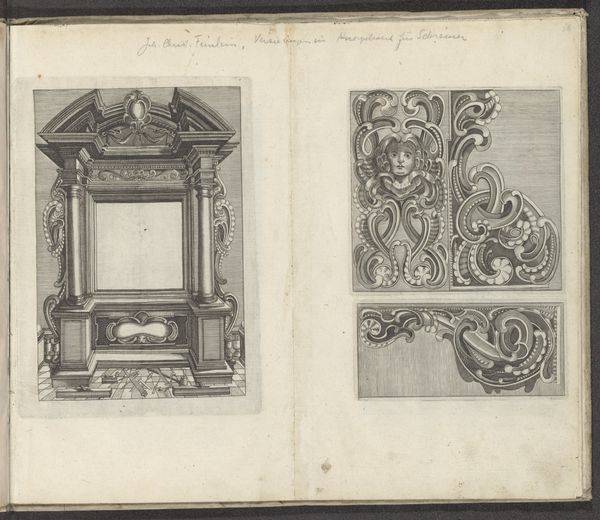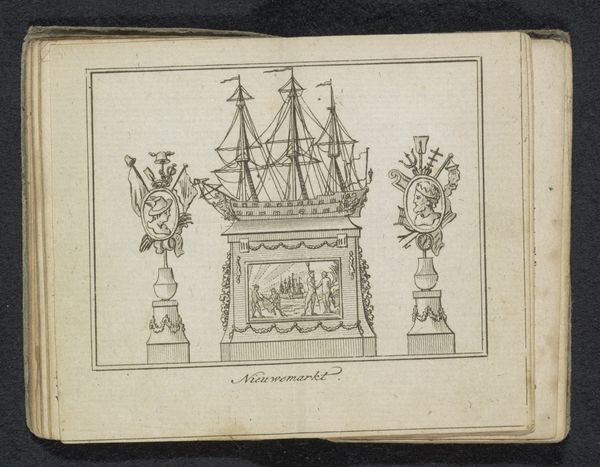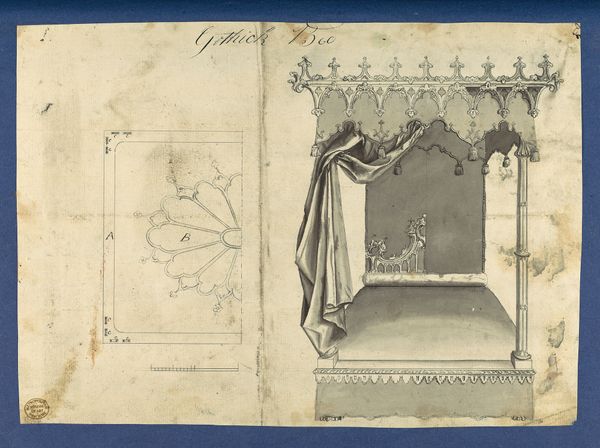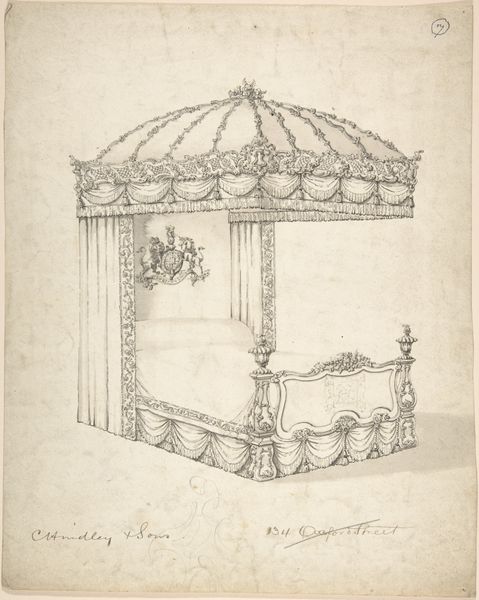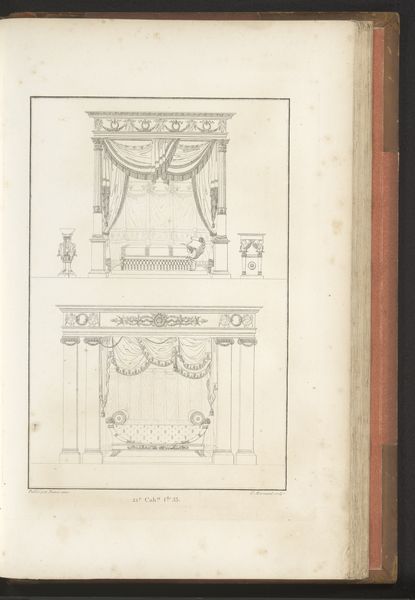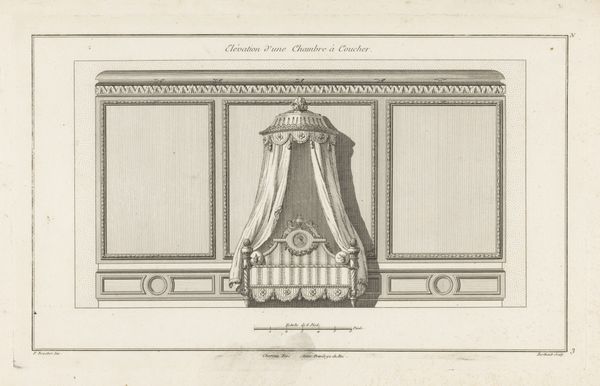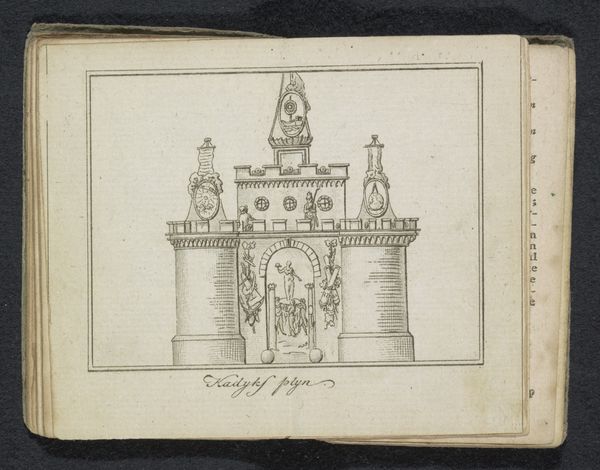
drawing, paper, ink
#
drawing
#
neoclacissism
#
paper
#
ink
#
coloured pencil
#
geometric
#
line
#
cityscape
Dimensions: height 98 mm, width 116 mm
Copyright: Rijks Museum: Open Domain
Curator: This intriguing ink and colored pencil drawing is titled "Decoratie op de Nieuwendijk, 1795." It depicts decorations on the Nieuwendijk, a street in Amsterdam, dating back to 1795. The piece is held at the Rijksmuseum. Editor: My first thought? It looks so restrained, almost clinical. The strong lines and geometric design give it a sense of order, but I wonder what occasion called for such formalized decorations. Curator: Exactly! That is where the history comes alive. 1795 was a pivotal year. This decoration likely reflects the Batavian Revolution and the arrival of French revolutionary ideals in the Netherlands. "Vryheid, Gelykheid, Broederschap" are inscribed across the top. Editor: "Freedom, Equality, Fraternity," but spelled with a "V" for Vryheid. I’m struck by how these concepts, radical at the time, are being presented through this classical, almost Roman-looking structure. It seems like they are trying to legitimize these revolutionary concepts by linking them to older, established imagery of power and authority. Curator: A keen observation. The Neoclassical style, popular at the time, sought to emulate the art and architecture of ancient Greece and Rome, cultures seen as embodiments of reason and democracy. Using it here connected the revolution to those ideals. Think of the civic virtue such symbology conveys. Editor: Absolutely, and the garland motif softens the otherwise rigid structure. It’s fascinating how visual cues were consciously used to sway public opinion and solidify this new social order, isn’t it? It's a reminder of how revolutions are also about redefining shared cultural languages. Curator: And about establishing public spaces that reflected a commitment to these values. In effect, every element here communicates a new ideological message, all in the service of creating a fresh cultural memory for this society. Editor: It makes you wonder how people reacted to seeing these declarations right in the middle of their everyday world. Thank you for pointing out what may otherwise have been invisible to me. Curator: My pleasure. Hopefully, that clarifies not only what the drawing represents but also how art becomes a key tool during periods of radical political transformation.
Comments
No comments
Be the first to comment and join the conversation on the ultimate creative platform.
